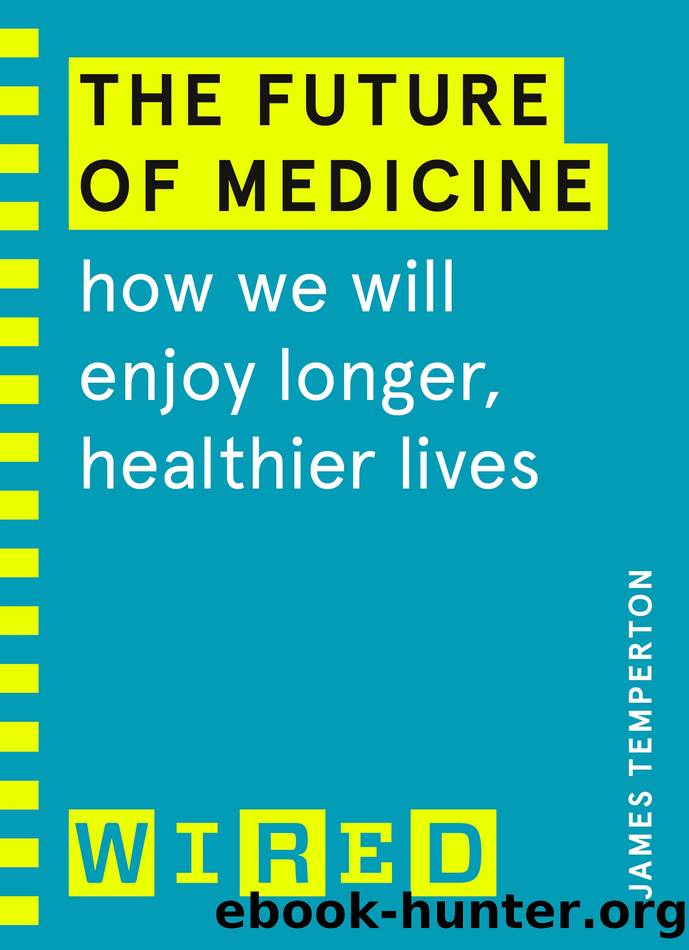The Future of Medicine (WIRED Guides): How We Will Enjoy Longer, Healthier Lives by James Temperton & Wired

Author:James Temperton & Wired [Temperton, James & Wired]
Language: eng
Format: epub
Tags: Business & Economics, Management, Entrepreneurship, Social Science, Future Studies, General, Strategic Planning, Technology & Engineering, Health & Fitness, science
ISBN: 9781473585638
Google: CbvmDwAAQBAJ
Publisher: Random House
Published: 2021-03-25T23:53:01.604746+00:00
CHAPTER FOUR
A cure for cancer
By the time he was 15 years old Connor McMahon had already beaten cancer twice. Connor, a talented young hockey player who grew up in Cumming, a small city just north of Atlanta, Georgia, had spent 12 years of his life fighting acute lymphoblastic leukaemia. He had endured six years of chemotherapy, been hospitalised eight times, spent eight weeks as a hospital inpatient, attended 136 cancer-centre appointments, had four surgeries, 23 bone-marrow aspirations, 40 spinal taps and had taken thousands of pills. But, by the summer of 2015, Connor was out the other side. He received his last dose of chemotherapy and sailed through subsequent blood tests to check if the cancer had returned. Month after month the blood tests came back perfect. Then, in June 2016, abnormalities were detected. More tests. Then the phone rang.
âHis oncologist called me,â says Don, Connorâs father. âHe said, âThereâs no good way to tell you this, but the cancerâs back.â I was in denial.â The prognosis was not good. The only option for Connor was a bone-marrow transplant, which would give him a 30 per cent chance of surviving the next 12 months. âWhen the head of oncology at the best childrenâs hospital in the south tells you your kidâs going to be dead in twelve months, it kinda hurts,â says Don. âHe said, âItâs not about quantity, itâs about quality. Thereâs really nothing we can do.â I was devastated.â
More bad news would follow. Tests confirmed that six years of chemotherapy had left Connor sterile. That night Don was having some drinks at a neighbourâs house when his phone started pinging. He was being bombarded with messages from someone who followed âConnorâs Hopeâ, a Facebook page that he had created to document his sonâs journey and shine a light on children going through similarly hard times. When Don woke up the next morning and looked at a video he had been sent the night before, his hangover quickly lifted. The video showed a child just like Connor, months from death, who had been given an experimental treatment to fight her cancer. Like Connor, the girl in the video had acute lymphoblastic leukaemia, the most common childhood cancer. And from the brink of death, the girl in the video had, within days, been declared cancer-free. âI walked into Connorâs room and I woke him up and we watched the video and he said, âI want that.ââ
The girl in the video was Emily Whitehead. Like Connor, Emily was one of the unlucky kids with acute lymphoblastic leukaemia. Remission rates for the most common form of the disease are 85 per cent. Emily and Connor found themselves on the wrong side of the divide. Like Connor, Emilyâs cancer was ferocious. For 16 months it resisted chemotherapy. At its peak, the cancer in her bloodstream was doubling with each passing day. A bone-marrow transplant was no longer possible â the aggressiveness of the chemotherapy that had failed to defeat Emilyâs cancer had, in the process, almost defeated Emily.
Download
This site does not store any files on its server. We only index and link to content provided by other sites. Please contact the content providers to delete copyright contents if any and email us, we'll remove relevant links or contents immediately.
Zero to IPO: Over $1 Trillion of Actionable Advice from the World's Most Successful Entrepreneurs by Frederic Kerrest(4295)
Machine Learning at Scale with H2O by Gregory Keys | David Whiting(4183)
Never by Ken Follett(3791)
Harry Potter and the Goblet Of Fire by J.K. Rowling(3775)
Ogilvy on Advertising by David Ogilvy(3510)
Shadow of Night by Deborah Harkness(3303)
The Man Who Died Twice by Richard Osman(2997)
Book of Life by Deborah Harkness(2867)
The Tipping Point by Malcolm Gladwell(2827)
Will by Will Smith(2793)
0041152001443424520 .pdf by Unknown(2784)
My Brilliant Friend by Elena Ferrante(2774)
How Proust Can Change Your Life by Alain De Botton(2742)
Purple Hibiscus by Chimamanda Ngozi Adichie(2652)
How to Pay Zero Taxes, 2018 by Jeff A. Schnepper(2602)
Hooked: A Dark, Contemporary Romance (Never After Series) by Emily McIntire(2502)
Rationality by Steven Pinker(2291)
Borders by unknow(2229)
Can't Hurt Me: Master Your Mind and Defy the Odds - Clean Edition by David Goggins(2228)
